Content
- What cannabis light burn is and how to recognize it
- Causes of light burn and how to prevent it
- How to treat light scald and restore the plant to health
What cannabis light burn is and how to recognize it
Light scald is damage to the leaves and upper parts of the cannabis plant caused by excessive light intensity. Light scald occurs when the plant receives too much light in a short period of time or when the light source is too close to the plant. This type of damage is more common indoors and especially in growboxes, as intense light fixtures such as LED panels and sodium lamps provide light close to natural sunlight, but can overload the plant.
Signs of light burn
Light burn can be recognized by a number of characteristic signs:
- Leaves, especially at the top of the plant, begin to lighten and turn yellow. This is often because the plant, in an attempt to protect itself from excess light, reduces its ability to photosynthesize in the damaged areas.
- Leaf edges may become almost white or light yellow, indicating localized damage to the plant's tissues caused by intense light.
- Brown spots may appear in the areas most heavily exposed to light, indicating that the cells of the plant have literally “burned”. Strong light dries out the leaf tissue, leaving dry areas that can no longer fulfill their function.
- Burned leaves may curl, become brittle and crumble when touched. Curling is also a defensive reaction of the plant as it tries to reduce the surface area exposed to light.
Effects on different types of cannabis
The response to light scald can vary depending on the genetics of the plant, namely sativa or indica.
Sativa plants have thinner, longer leaves and taller growth. They are often better adapted to natural, diffused sunlight. Because of the thin leaf structure, sativa can suffer light scorch more quickly, especially if a light fixture is placed too close. Signs of scorch, such as yellowing and drying of the edges, can appear more quickly in sativas than indica, requiring particularly careful attention to light fixture placement.
Indica plants are more compact and have broad, dense leaves that are better able to withstand intense light. However, despite its resilience, indica is also susceptible to light scald, especially when exposed to high-powered lights for long periods of time. Indica may show the first signs of scorch more slowly than sativa, but the damage can be more extensive if the light regime is not corrected in time.
How to distinguish light burn from other problems
It is important to realize that light scald can be confused with other problems such as nutrient deficiencies, especially nitrogen or potassium deficiencies, which also cause yellowing and wilting of the leaves. To be sure that it is the light that is the problem, you should check the position of the light fixtures and assess the light intensity in the growbox. If the light source is too close and the problem affects mainly the upper parts of the plant, it is probably light scald. In the case of nutrient deficiencies, damage is usually first observed on the lower leaves of the plant.
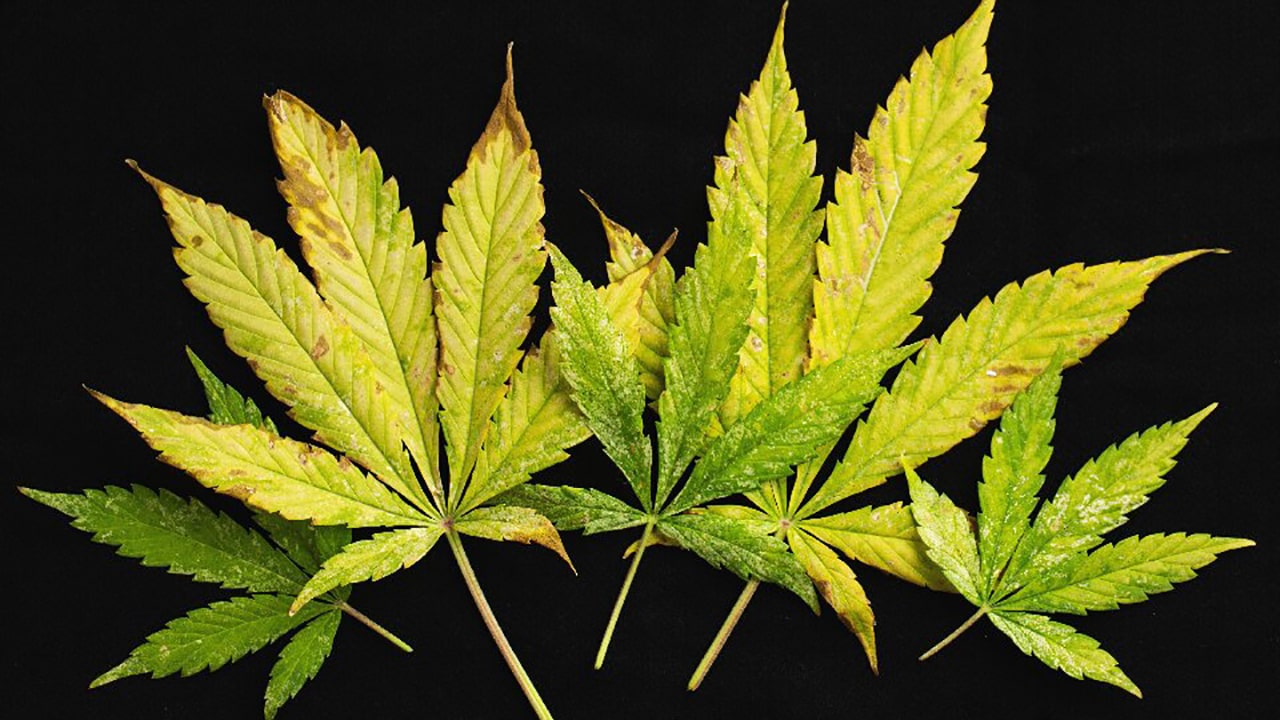
Causes of light burn and how to prevent it
Cannabis light burn is a problem that occurs due to overly bright lighting or insufficient distance between the light source and the plant. Burns are particularly common in indoor grooving environments.
The main causes of light burn
Cannabis requires intense lighting for photosynthesis and good growth, but overly powerful lights such as LEDs can be detrimental. Although LED panels are economical and efficient, they have a high light output, which can be excessive for the plant, especially during the growing season when the plants are not yet accustomed to strong light.
In growboxes, it is important to maintain the recommended distance between the light source and the plants. Placing lights too close together increases the risk of scorching. The distance usually depends on the type of light - for LED lamps it is between 30 and 60 cm, for sodium lamps (HPS) between 50 and 90 cm. Adjusting the height of the lights as the plants grow is an important step to prevent burns.
Dense air around the plants and insufficient cooling in the growbox increase the heating effect of the lights, increasing the chance of scorch. Cannabis needs a constant supply of fresh air to cool the leaves and prevent desiccation. In poorly ventilated growboxes, heat builds up and leaf temperatures rise, creating conditions for scorch.
Fertilizers play an important role in plant growth, but excessive nitrogen in nutrient solutions can accelerate growth, causing leaves to become more sensitive to light. With rapid growth, the plant expends resources to develop new tissues that are more vulnerable to intense light.
How light burn is prevented
Adjust the distance between the light sources and the upper parts of the plant depending on their type and age. For young plants and seedlings, it is best to start with soft lighting, gradually increasing the intensity as the shrubs get stronger. Gradually bringing the lights closer together will allow the plant to adapt, reducing the risk of burning.
Cannabis requires different lighting regimes in different phases of growth. In the vegetation phase, 18-20 hours of light per day is recommended, and in the flowering phase - 12 hours. Excessive light duration in a closed growbox can create a cumulative overheating effect and lead to scorch.
Good air circulation keeps the temperature around the plants stable and prevents overheating. This is accomplished by using fans to distribute heat and exhaust systems that remove hot air. Installing a small fan aimed at the upper leaves also helps to reduce temperatures.
Diffusers and light filters help diffuse light, reducing its intensity and preventing direct exposure to the leaves. This is useful if the grower is using high-power LED and sodium lamps. Diffusers soften the light and make it more even, reducing the risk of burns and providing the plant with sufficient light without harming it.
Recommendations from experienced growers for different types of cannabis
Sativa, a cannabis species native to tropical regions, requires less intense light and is more prone to light burn. When growing sativa in a growbox, experienced growers recommend using diffused light and not bringing the lights too close.
Indica is more tolerant of intense light because of its dense leaves and compact structure. However, excessive lighting can also damage indica, especially in poorly ventilated conditions. For this type, keeping a distance between the luminaire and the plant, as well as moderate lighting during the flowering phase, is sufficient.
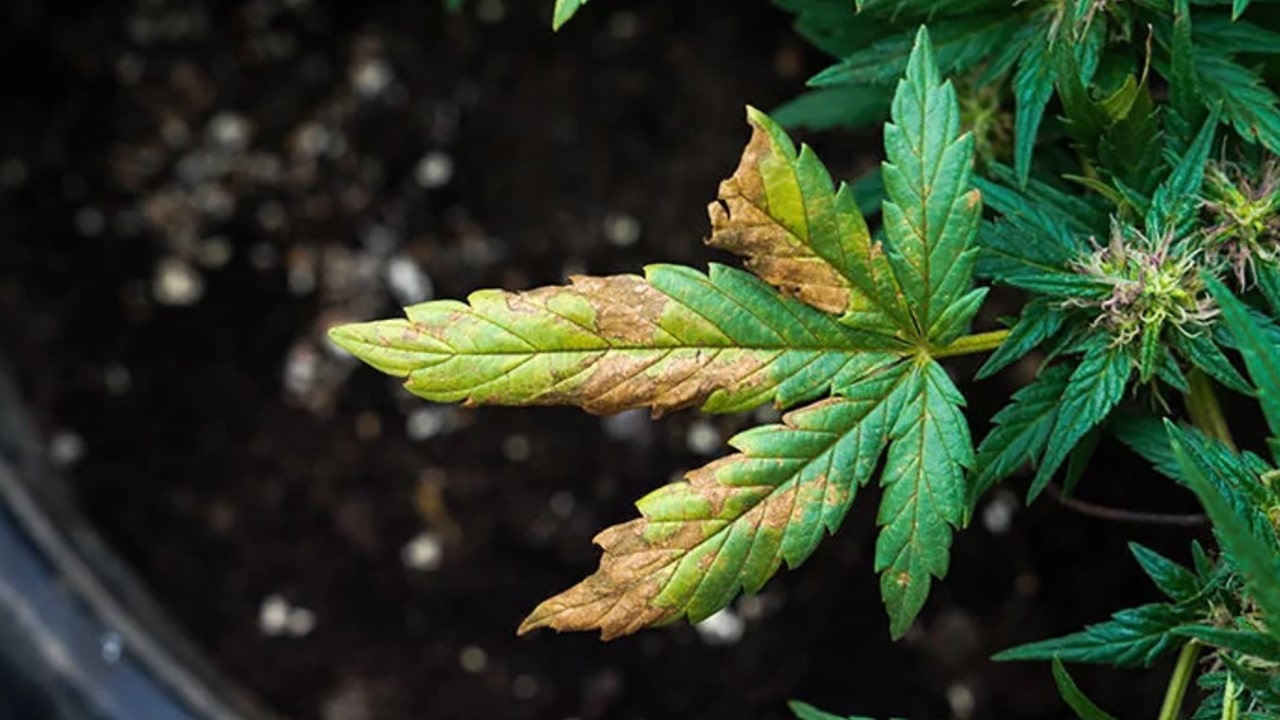
How to treat light scald and restore the plant to health
Light burn can significantly damage a cannabis plant, but timely action can help restore its health and prevent further deterioration. It is important not only to eliminate the causes that caused the burn, but also to create conditions that will allow the plant to recover quickly.
Light control
The first and most important step in treating a light burn is to reduce the light intensity and increase the distance between the light source and the plant.
- If light burns appear on the upper leaves of the plant, raise the lights to the recommended height. For example, for LED lamps, the distance from the top of the plant to the light source should be 40-60 cm.
- Reduce the lighting time, especially if light scald occurs during the vegetation phase. Give the plant more time to recover in the dark to reduce stress.
- If possible, add diffusers or diffusing screens to make the light less intense. Diffused light allows the plant to receive adequate light without the risk of re-burning.
Improving conditions in the growbox
Optimal conditions in the grow box promote rapid recovery of the plant from damage.
- Add fans to create air circulation around the plant to avoid overheating. Good ventilation helps to reduce the temperature on the surface of the leaves and prevents drying out.
- The temperature in the growbox should not exceed 25-28°C. Humidity should be maintained at 50-60% during the growing phase and around 40-50% during the flowering phase. These conditions allow the plant to minimize stress and recover more quickly.
- If plants are placed too close to the walls, heat and light may be unevenly distributed, increasing scorch in some areas.
Feeding and fertilizer adjustments
Proper nutrition plays an important role in a plant's recovery from light scald. Incorrect fertilizers can exacerbate the damage and hinder the rehabilitation process.
- Although nitrogen is essential for growth, excess nitrogen makes the leaves more susceptible to light scald. When regenerating the plant, use fertilizers with a lower nitrogen content, especially during the flowering phase. Switch to nutrient solutions with a higher content of phosphorus and potassium, which strengthen the roots and promote the formation of buds.
- Light scald weakens the plant, making it sensitive to strong nutrient solutions. Growers reduce fertilizer concentrations by about 25-50% so as not to overload the root system while the plant recovers. After 1-2 weeks, when signs of recovery are visible, you can gradually return to the normal dosage.
- Many fertilizer manufacturers offer special solutions with vitamins and minerals to help the plant cope with stress and stimulate growth. These preparations strengthen cells and increase the leaves' ability to photosynthesize, which speeds up recovery.
Removal of damaged parts
Removing diseased leaves helps the plant redirect energy to healthy areas and speeds its recovery.
- Leaves with deep burns that have become dry and brittle should be carefully removed. These leaves no longer fulfill their function and can become a source of infection.
- Leaves with minor damage, such as yellowed or brown edges, can be left on the plant. They are still involved in photosynthesis and support the growth of the plant. They help the plant to obtain nutrients and regenerate itself.
Caring for the plant after a burn involves regular monitoring of its condition and pruning back damaged parts as necessary. Continuous care will prevent the scorch from spreading and preserve healthy parts of the plant.
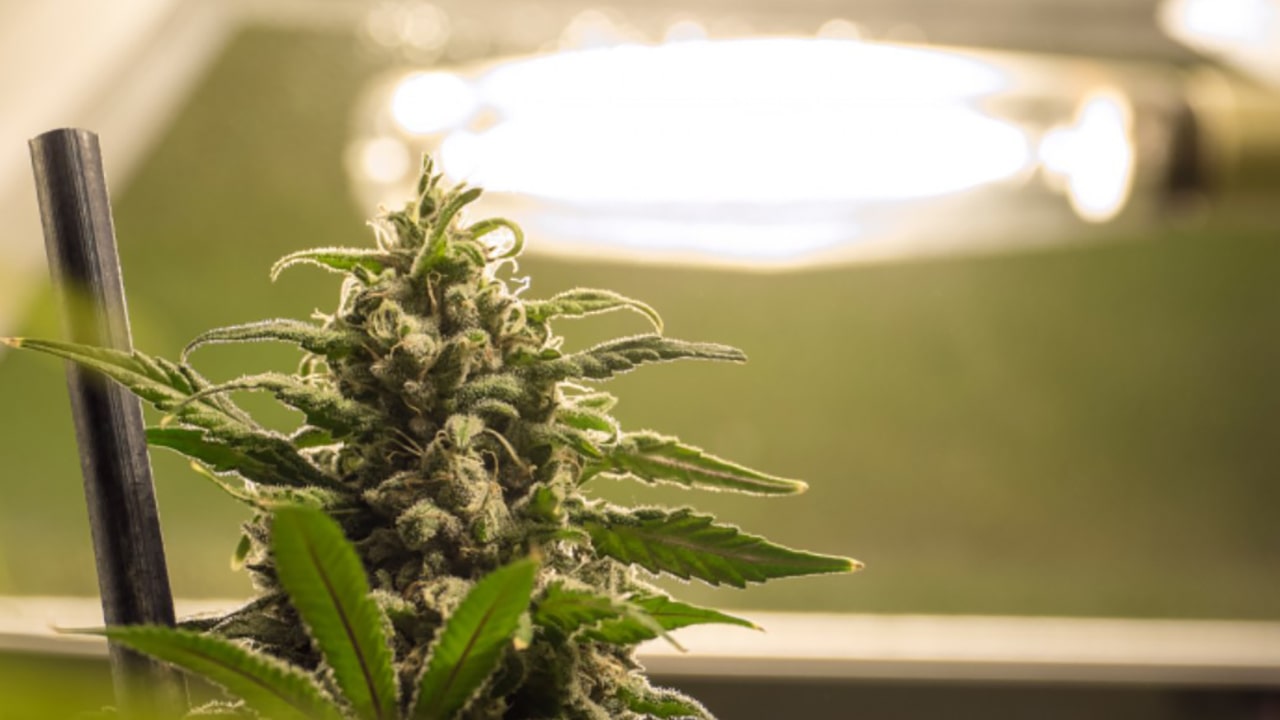
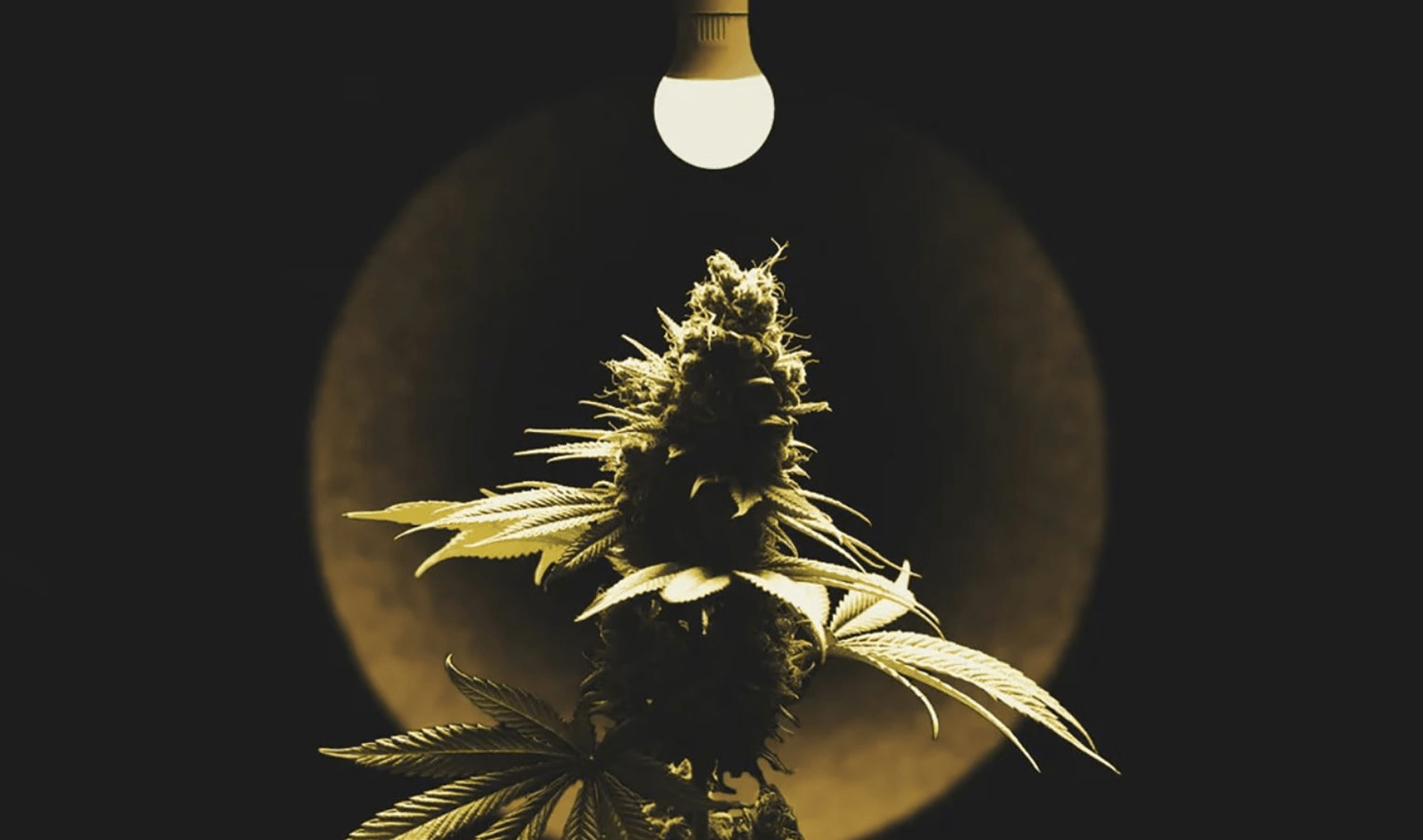
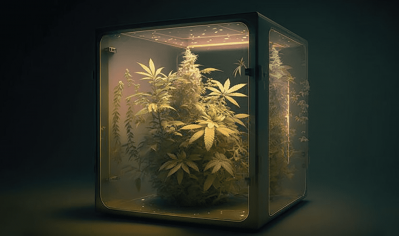
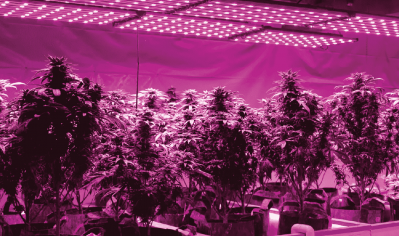
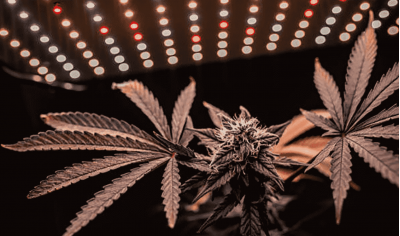
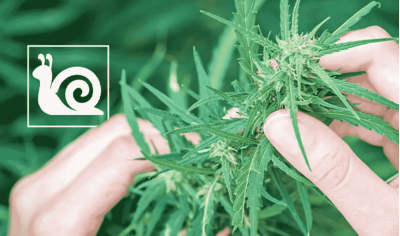
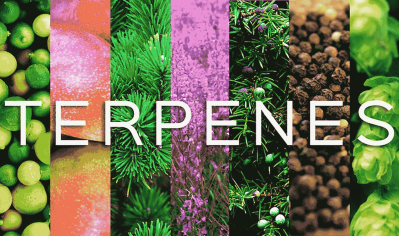
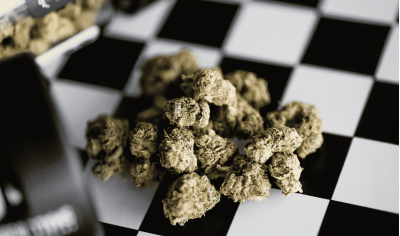
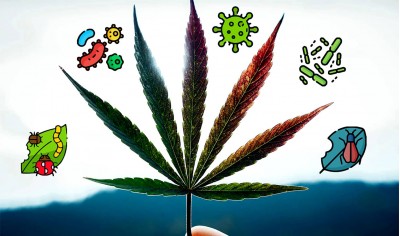


Write a comment